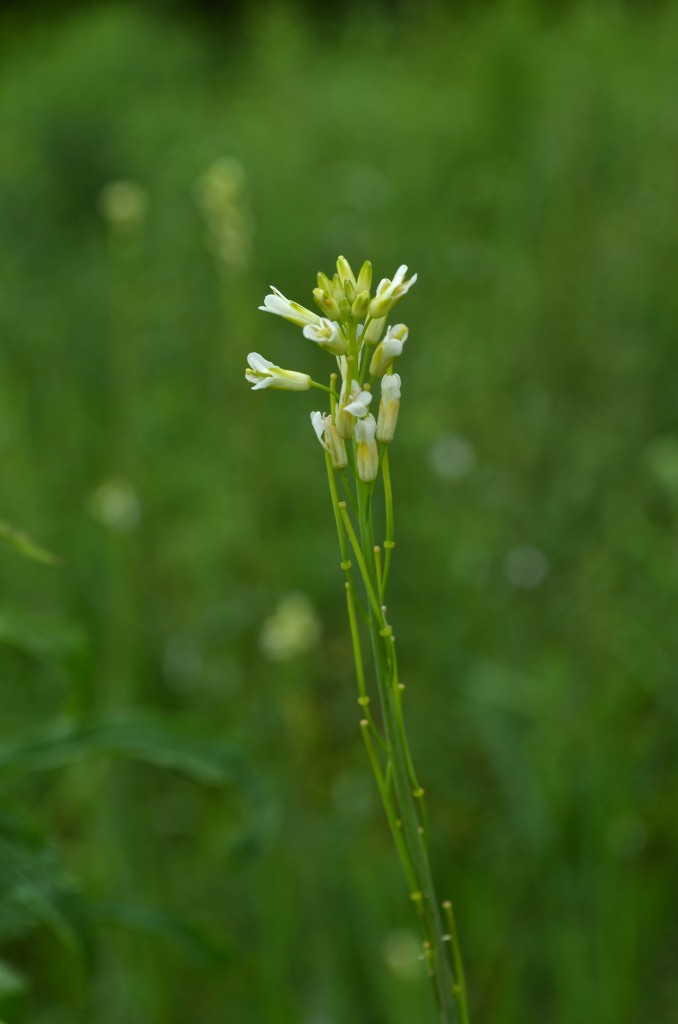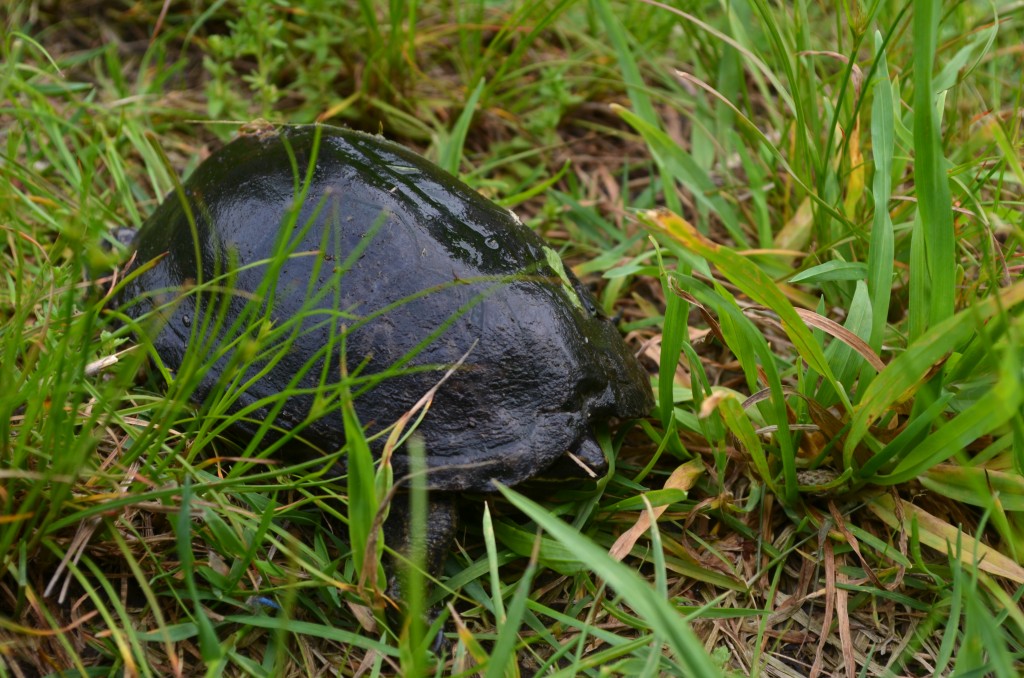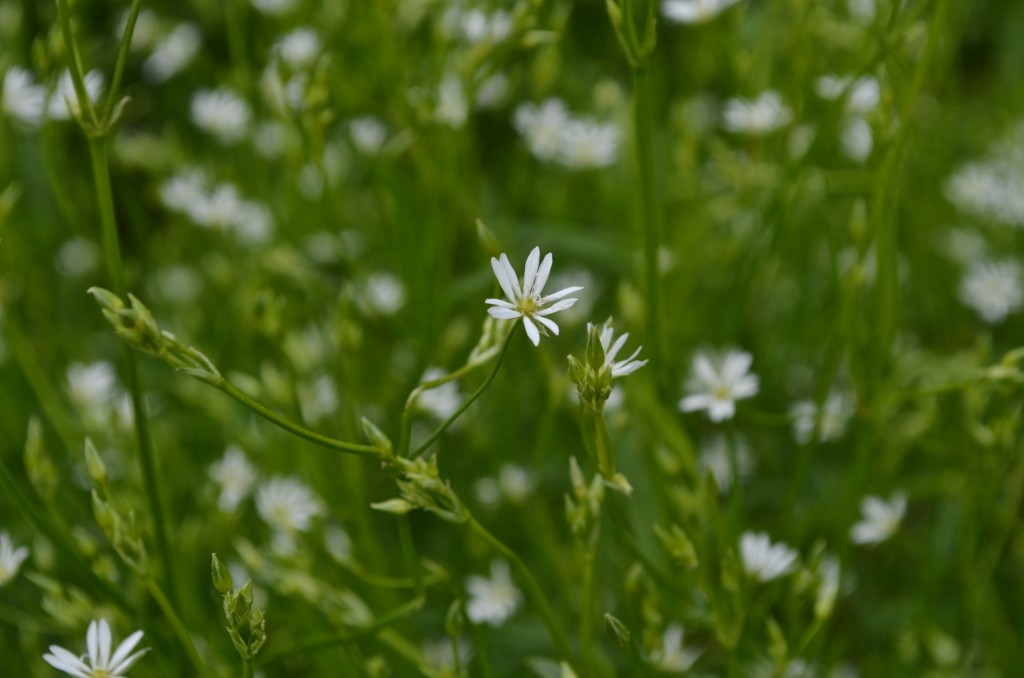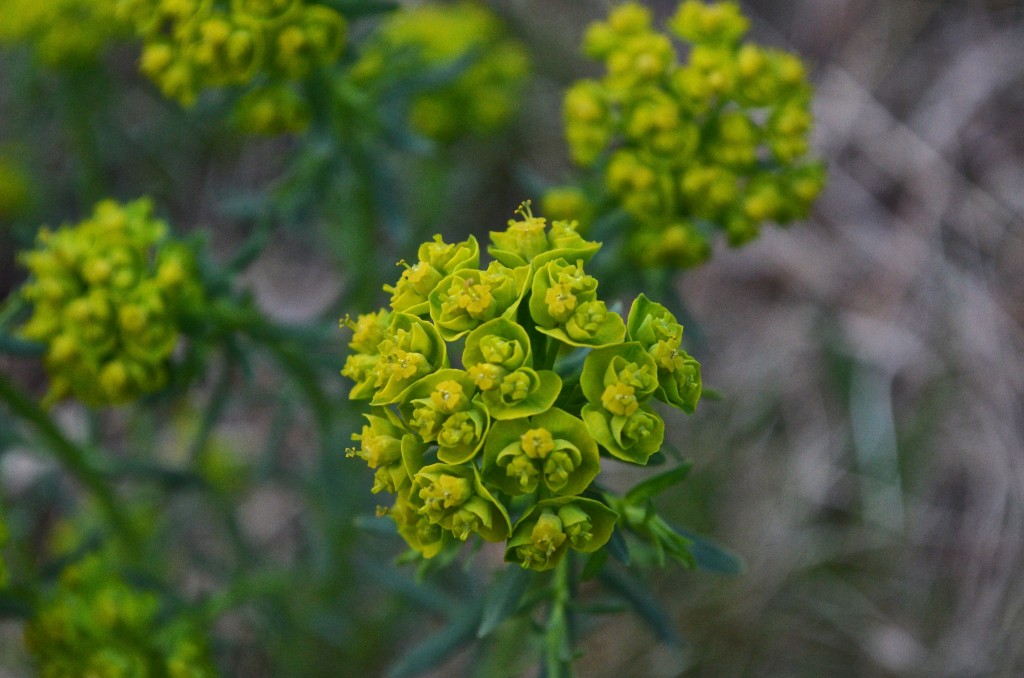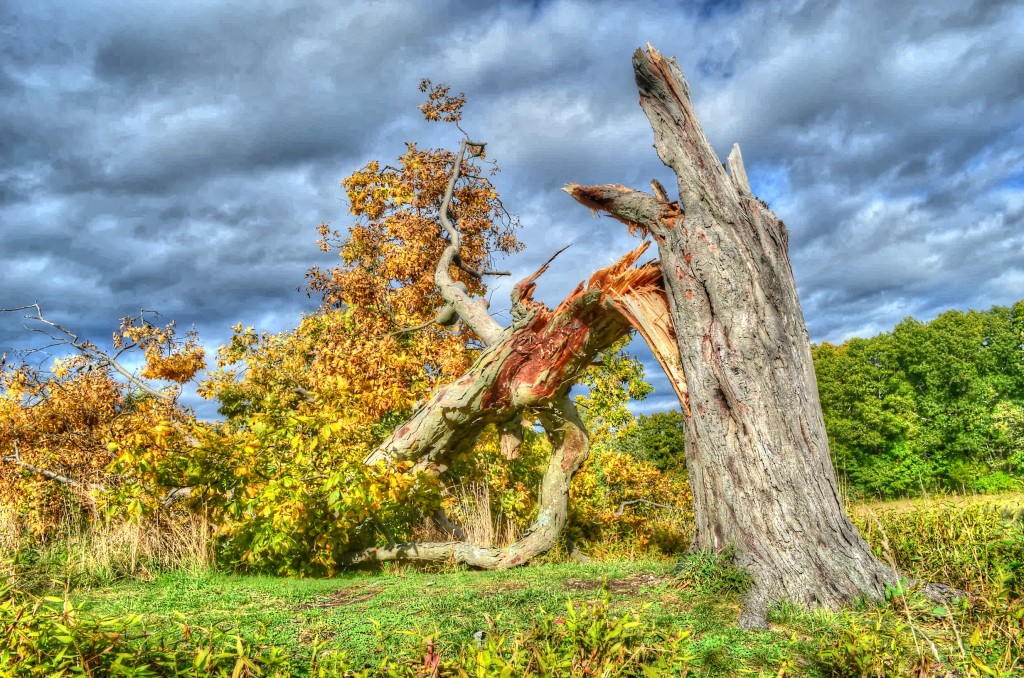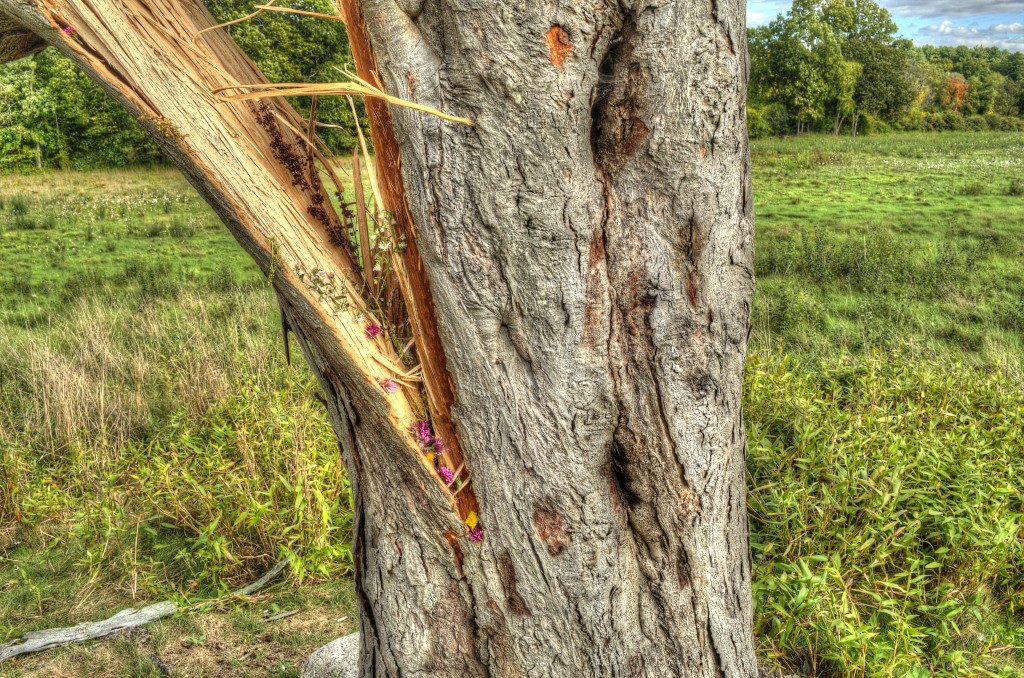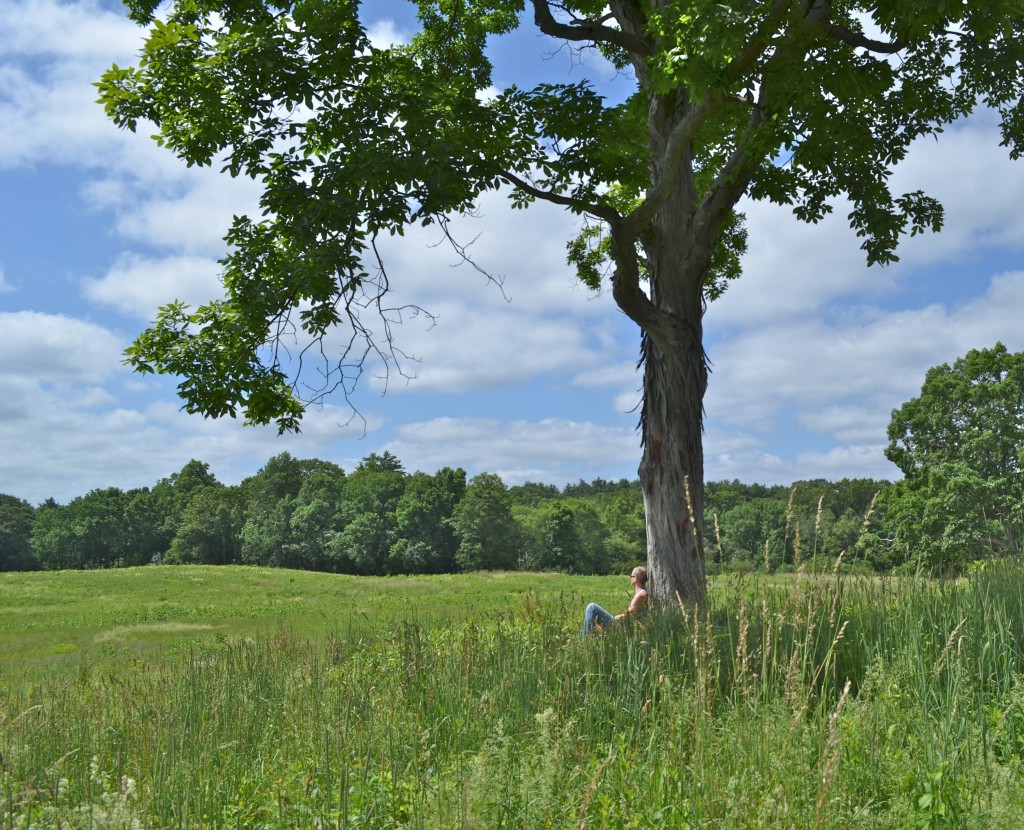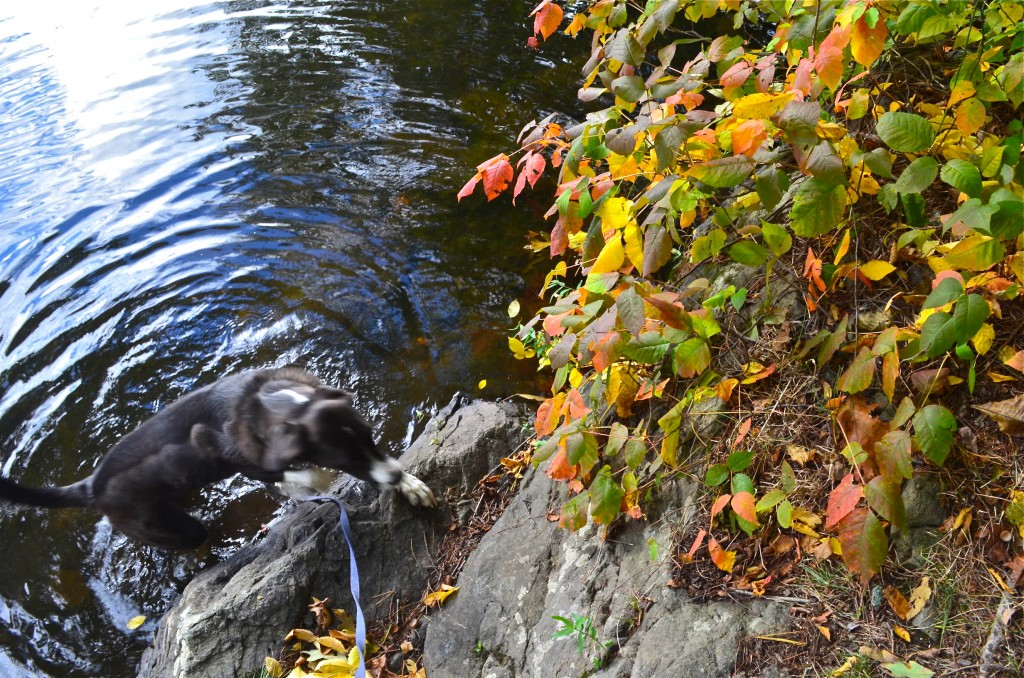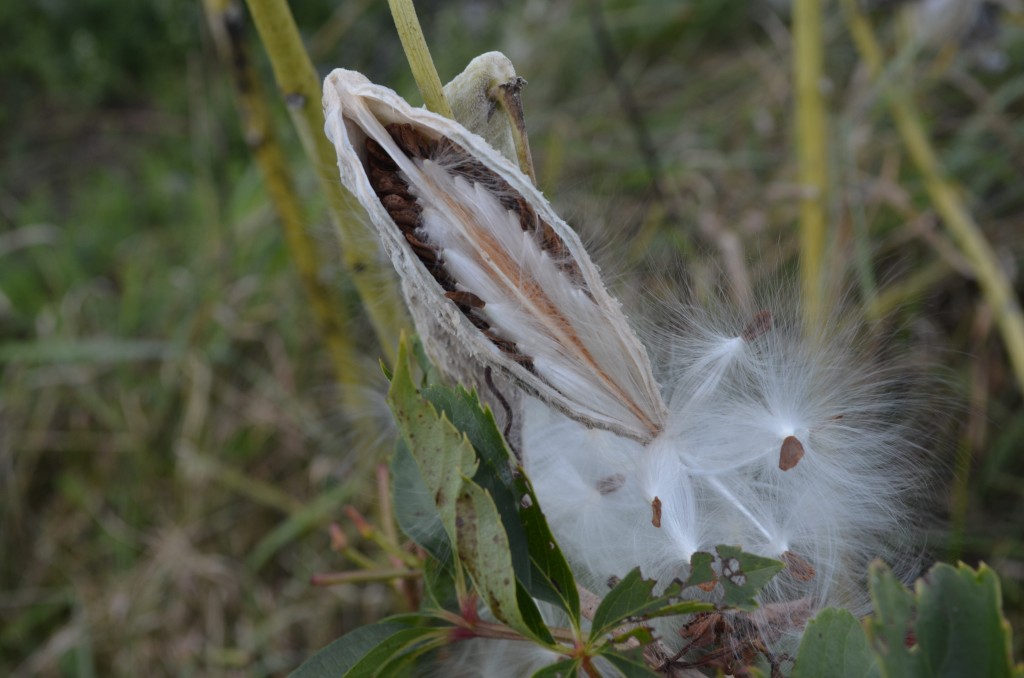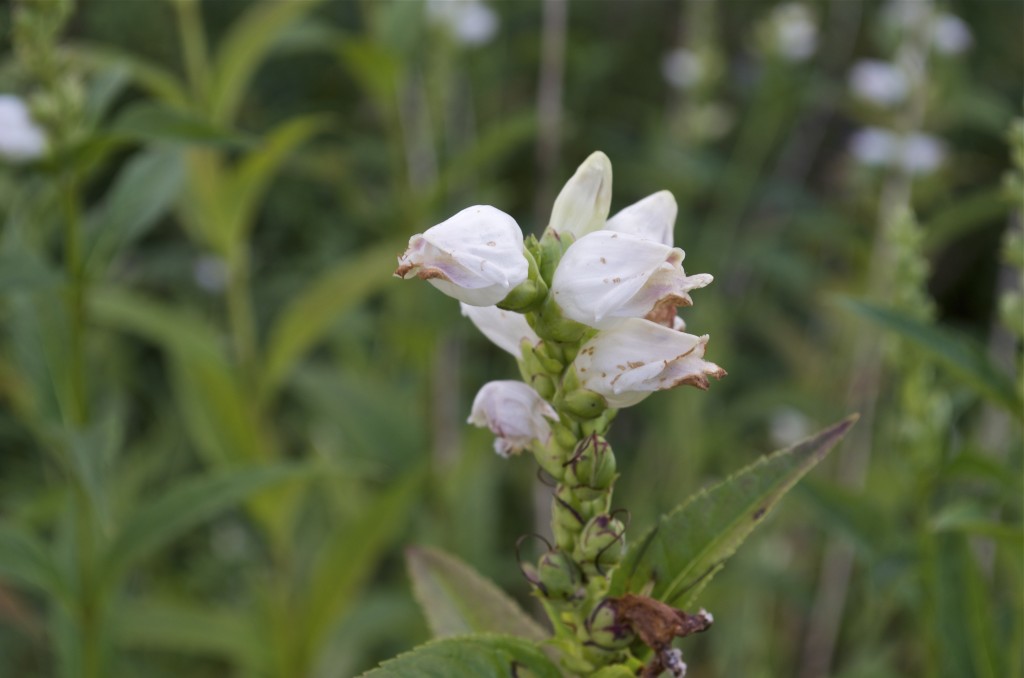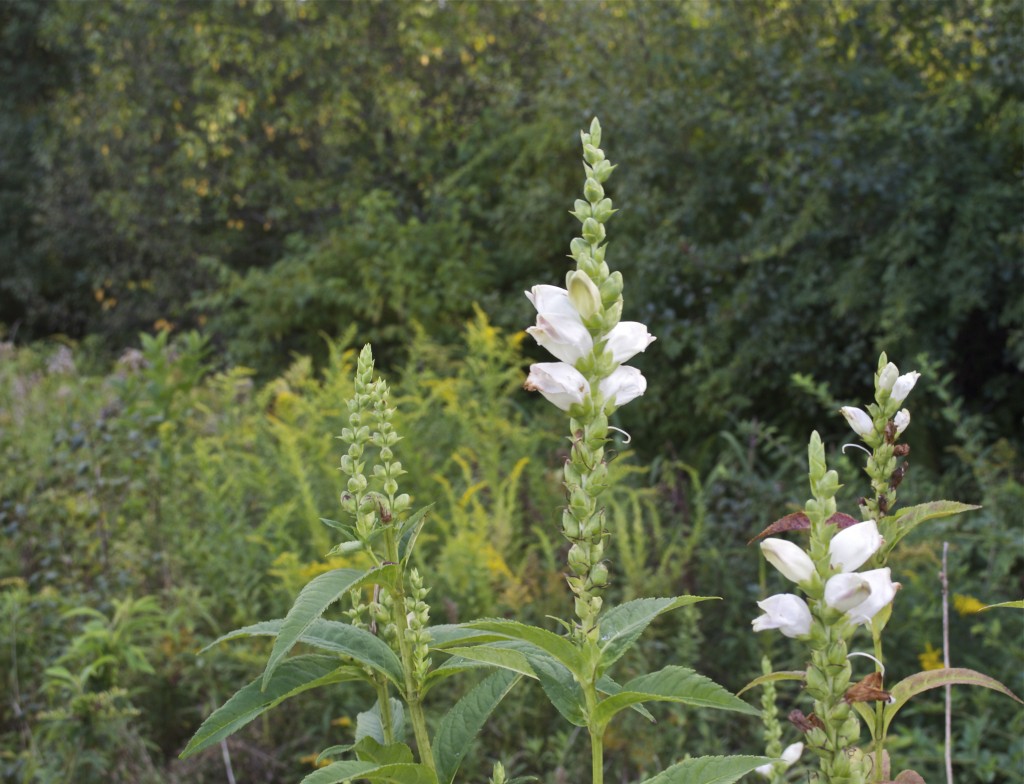This is a plant with creamy white flowers, and later each flower is replaced by a leafless vertical seed pod that hugs the stem. They can grow to be 4 to 5 feet tall. Native. (Photo taken May 29, 2013)
Tower Rockcress, Tower Mustard (Arabis glabra)
Bonus picture: this turtle was also using the path. I think it’s a musk turtle. They only get to be about 5 inches long, and are primarily aquatic, living in the shallows. This one was still wet from the river. They rarely leave the water, but they usually nest in June, so maybe this one was on a nesting mission.

